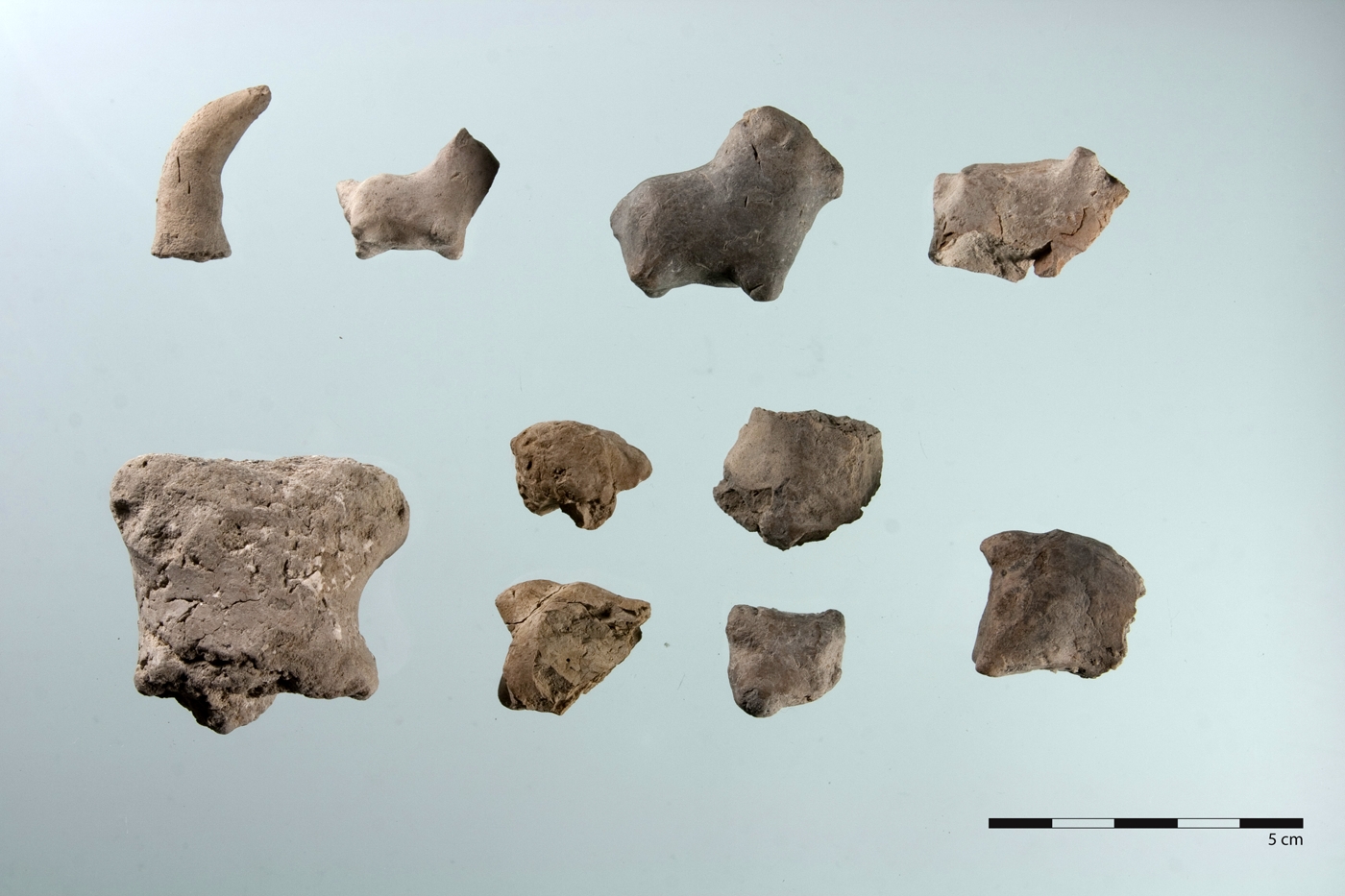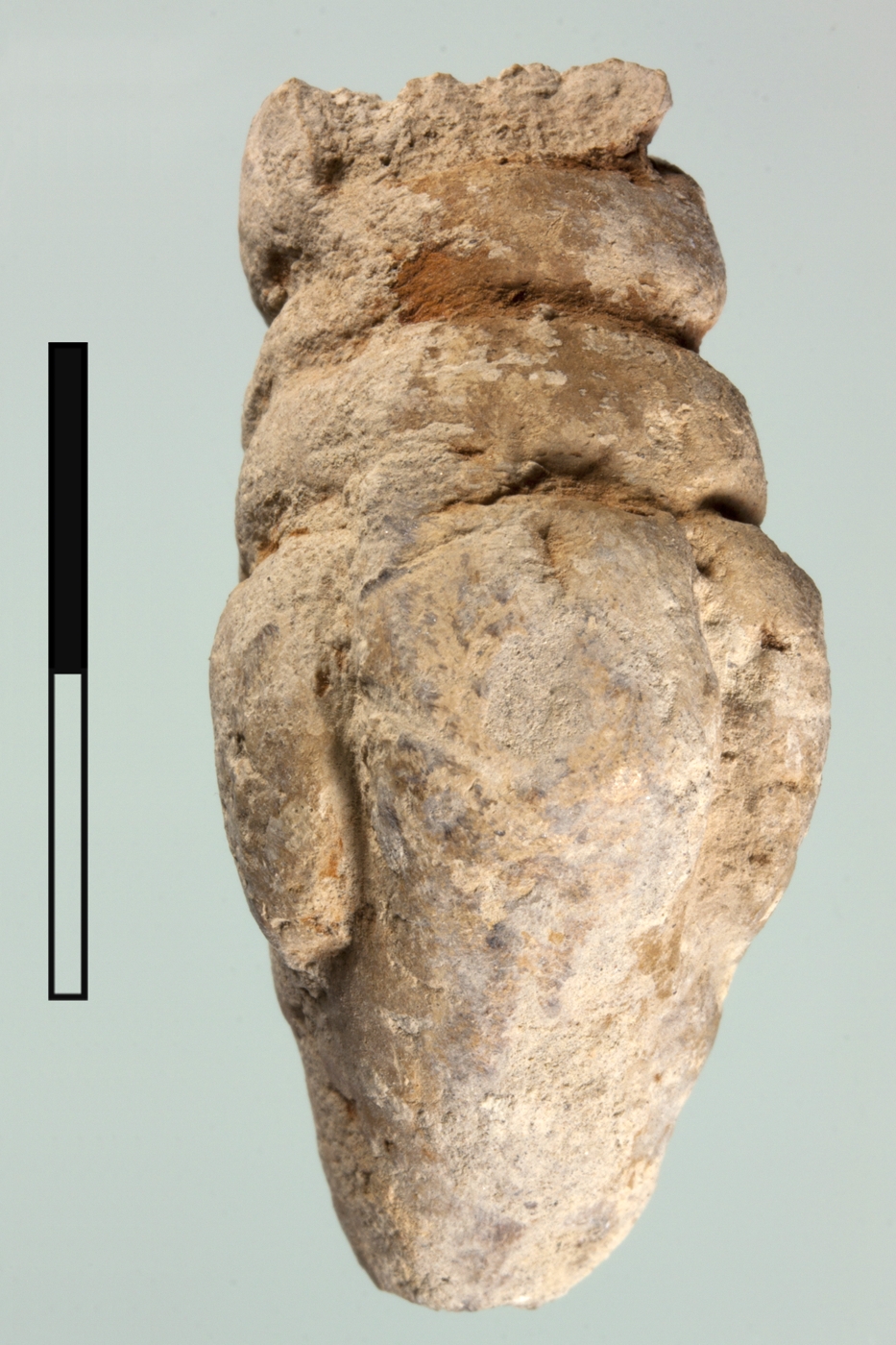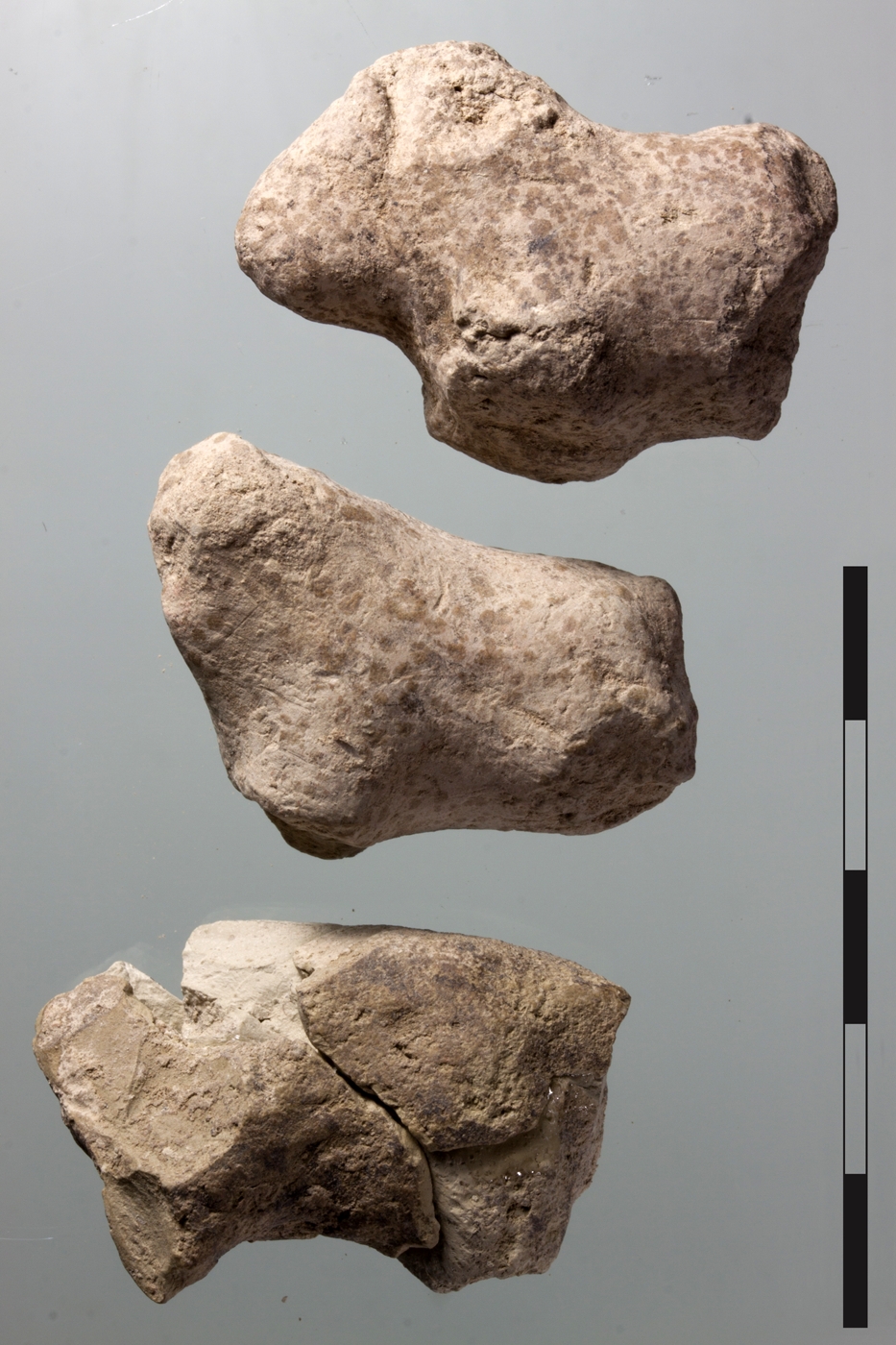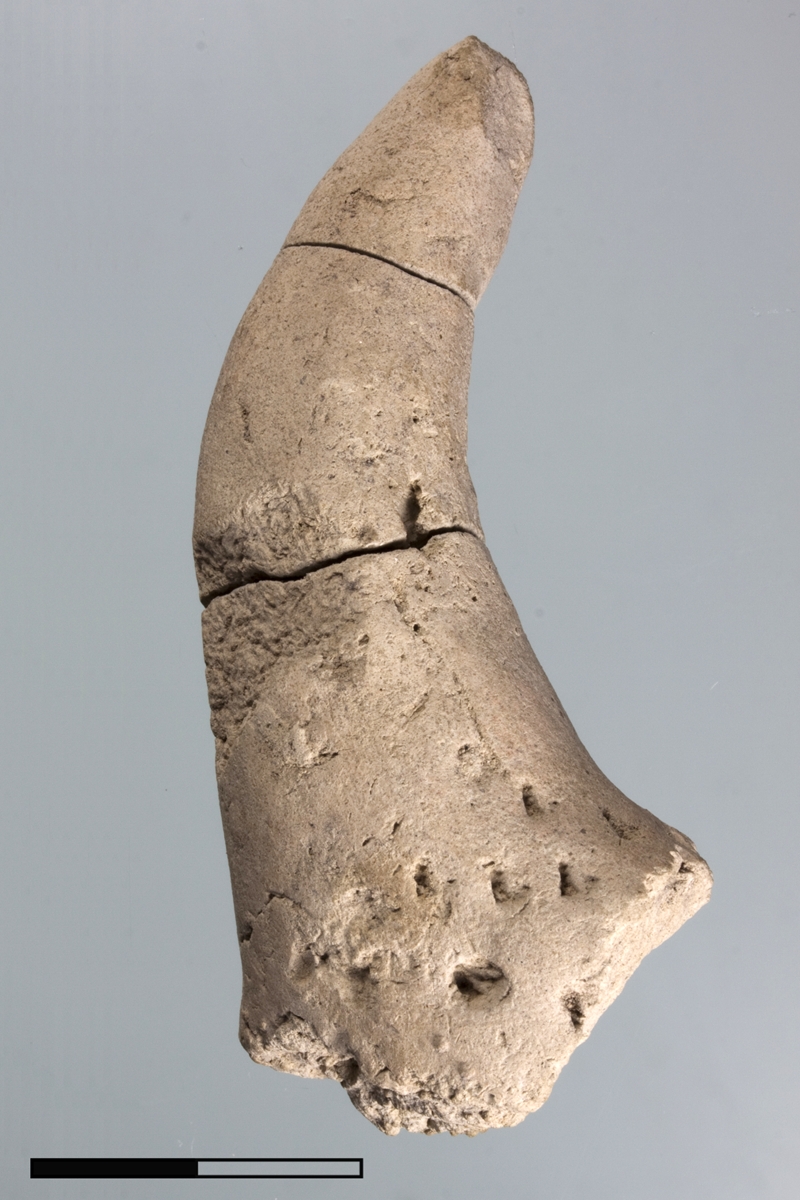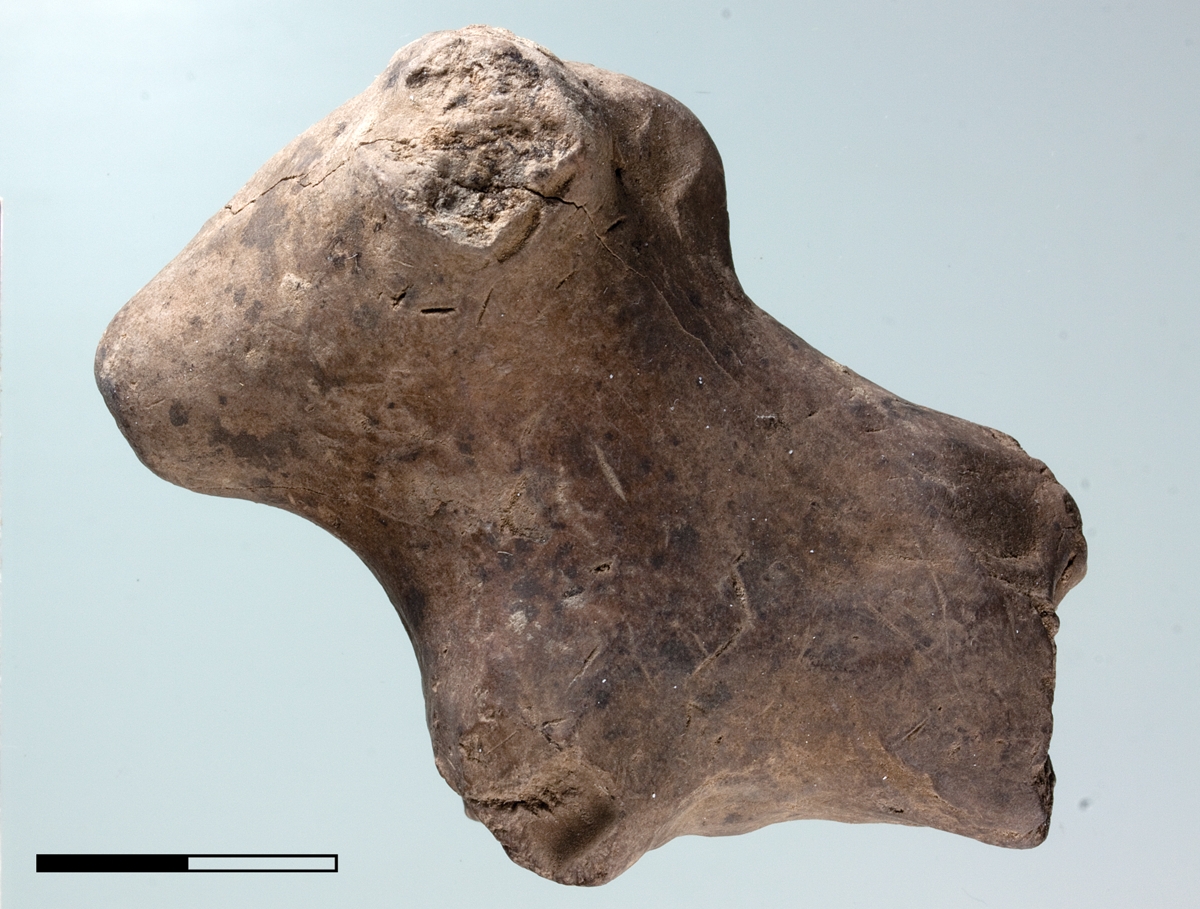Figurines
Figural representations occur in Monjukli Depe almost only as small, hand-formed clay objects in the form of animals. These zoomorphic figurines are unbaked and overwhelmingly depict quadrupeds. Their silhouette is only roughly elaborated. In addition to the legs, the rump and the snout are mostly easy to recognize, whereas other body parts such as ears, neck, tail, or hump are at best hinted at.
Figurines can be categorized into groups based on the uniform representation of particular body parts. The majority displays a goat-like body shape and other bodily attributes. Figurines with cattle-like attributes also occur relatively frequently. On some of these latter, a hump was depicted on the back. In addition, there are other figurines that are unique in terms of their formal characteristics and that exhibit some similarities to animals such as sheep or dogs. These latter cannot be attributed to any larger category.
Along with such "full body" representations in animal form, small clay objects in the form of horns were also recovered, which occasionally have round punctations. These horns are usually too large to have been part of the animal figurines that we found. They could have been attached to larger objects that were made of organic materials or perhaps they stood in for horned animals.
With the exception of one Neolithic example all figurines we recovered date to the early Aeneolithic. 57 animal figurines and 38 horns were recovered from Meana Horizon levels. They occur primarily in ashy contexts, both inside and outside houses in which they may have been kept.
An analysis of the spatial distribution of the animal figurines and the horns through the levels of the Aeneolithic settlement shows that there was a clear shift in the find contexts over the course of time. In the early levels there is a close connection between zoomorphic figurines and particular houses, while in the later levels the figurines are distributed across the whole site and in diverse areas. This spatial shift points to a clear change in the practices associated with these objects, from one in which there was a more exclusive handling to a more collective and public use. In contrast, a stylistic change in the animals depicted cannot be observed. In general, we can assume that the meaning of the animal figurines extended beyond economic aspects of animal husbandry, thus providing a glimpse into the wide-ranging human-animal relations in the community.
Additionally, on the western edge of the settlement, we recovered 10 small, tapered figurines that may be interpretable as abstract anthropomorphic depictions. They came from a pit that was apparently dug following the abandonment of the village. According to radiocarbon dating, the pit can be attributed to the Anau Ib period. The style of the figurines has parallels in the anthropomorphic depictions from the nearby Middle Aeneolithic site of Ilgynly Depe.
For further reading, see Eger in Pollock et al. (eds.) 2019.
